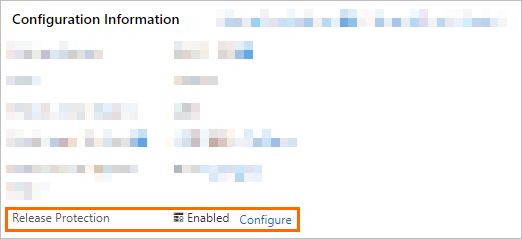For RDS SQL Server instances that support critical business operations, enabling release protection is advisable. This feature safeguards pay-as-you-go or Serverless instances from accidental deletion due to user error, thus preventing potential irreversible data loss. This guide details the steps to enable and disable release protection for instances, enhancing the management and security of your business data.
Protection effects
Upon activating release protection for an instance, the system implements the following safeguards during a release operation on the protected instance:
-
An error message appears when manually releasing an instance in the RDS console, preventing the release.
-
The
DeleteDBInstanceinterface returns an error message when called to release an instance, blocking the operation.
Prerequisites
The instance's billing method is either pay-as-you-go or Serverless.
Precautions
The release protection feature cannot prevent the automatic release of RDS instances in normal scenarios such as the following scenarios:
A payment in your account is overdue for more than 15 days.
The RDS instance does not comply with the security compliance policies.
Enable release protection when creating an instance
You can enable release protection while creating an instance via the RDS console or through the CreateDBInstance or CloneDBInstance interfaces, controlled by the DeletionProtection parameter.
The following section focuses on options related to release protection for instances. For more information about other configurations, see quickly create and use an RDS SQL Server instance.
-
Set the Billing Method to Pay-as-you-go or Serverless.
-
In the More Configurations area, select Prevent Accidental Deletion Through The Console Or API. Configure the remaining options as needed.

Modify the release protection property after instance creation
Modify the release protection property of an existing instance via the RDS console or the ModifyDBInstanceDeletionProtection interface to enable or disable release protection.
Log on to the ApsaraDB RDS console. In the left-side navigation pane, click Instances. In the top navigation bar, select the region in which the RDS instance resides.
-
On the Instance List page, locate the instance to be modified. In the Actions column, click .
-
Toggle Instance Release Protection as required.
-
Click OK.
Check the status of the release protection feature
Go to the Instances page. In the top navigation bar, select the region in which the RDS instance resides. Then, find the RDS instance and click the ID of the instance.
On the Basic Information page, view the Release Protection parameter in the Configuration Information section.
